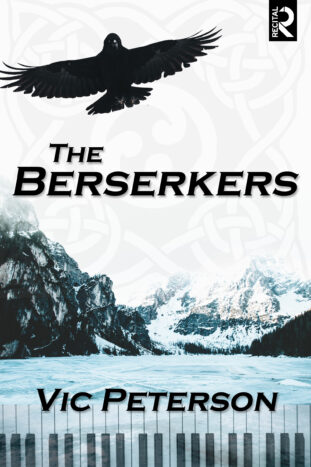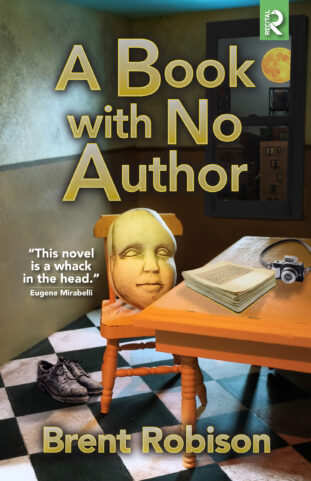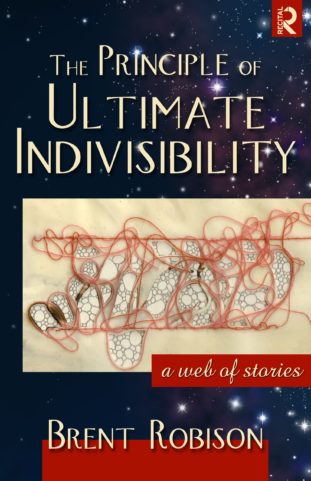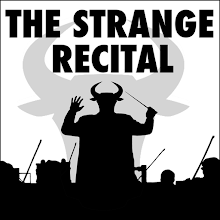Prominent on the lists of popular commercial fiction and television today is a category called “Scandi-Noir” or “Nordic Noir,” characterized by a police point of view, plain language, bleak landscapes, a dark and morally complex mood, and murder, of course. As I began Vic Peterson’s novel The Berserkers (Kindle edition, Recital Publishing, 2023), I was anticipating exactly that sort of genre experience. The first chapter, depicting a crime scene investigation on a frozen lake, did not begin to alter my expectations until its final two paragraphs:
“A pale tangle lay beside the hole the girl had been sunk in. It then dawned on me that the pale tangle was the girl. Her body lay sprawled on top of the ice, displaced by the minor tsunami of the sinking car, and ejected from the ice like the cork from a champagne bottle. Her clothes spread about her in wet snarls lurid under the dim sun, a cape and corset and stockings.
The girl's pallor was blue and ruinous. My jaw slackened. I tried to utter some words, any words, whether of shock, wisdom, or warning. No sound emanated from my lips. For a pair of large wings had begun unfolding around the corpse, beautiful, wispy, shivering with each gust like the pinfeathers of a hatchling drying in the dying light.”
We quickly learn in the next chapter that No, this is not a dead angel, nothing supernatural is going on. The murder victim is a girl in a Valkyrie costume. More police arrive, character quirks and hierarchies continue to be established, certain foibles of the narrator (decidedly not a detective) are exposed, a subtly comic tone suggested in the first chapter becomes more pronounced, and, well… maybe we could still be in a Nordic Noir novel. But the third chapter removes all doubt: something else is going on here. What is it?
Genre-busting, in my view, is a key consideration in dubbing a work “literary.” I’m always intrigued when an author rejects the security of meeting reader expectations in order to follow a more personal muse. Paul Auster’s The New York Trilogy subverts detective story tropes. In Gravity’s Rainbow, Thomas Pynchon leaps past science fiction conventions. Cormac McCarthy’s western novels are much more than their settings and cowboy details. These authors are using genre elements as vehicles to explore themes, philosophies, or even writing styles that reach beyond what most readers of a commercial genre expect.
Peterson is doing something like that in The Berserkers. We follow a Pynchonesque assemblage of characters through fabricated Scandinavian settings on a wild ride that is at once a Gothic comic book, a Sword & Sorcery quest in a gritty industrial landscape, an exploration of heavy metal music and soccer hooligans, a moody mystery told in lyrical prose, a comedy of errors, and an homage to ancient Norse sagas.
The story’s narrator, Grammaticus Kolbitter, is a hapless police records clerk who moonlights in an aspiring heavy metal band named in honor of the frenzied Viking warriors called berserkers. He finds himself on a quest for justice accompanied by two other misfits, a retired (or rather, fired) cop and a legend-loving young woman who suffers from gigantism. The villains they chase are like the Kray twins on motorcycles, but with A Clockwork Orange bloodlust and collars trimmed in wolf fur. Other vividly drawn weirdos populate the cast, but I want to focus on one in particular: the Constable.
The nameless Constable is the imperious police authority whose whim or precognition assigns Kolbitter to the case for no apparent reason. He wears a black cape-like greatcoat and glasses with the left lens blacked out to cover an empty eye socket, and he has two pet ravens, Minne (Memory) and Tanke (Thought). Odin, king of the gods in Norse mythology, is also blind in one eye and keeps two ravens as familiars. The Constable is often behind the scenes, his presence felt but not seen. One of the elements that elevates the novel beyond its plot is the strangeness of the Constable’s two contradictory autobiographies, found in pages that Kolbitter steals from the Constable’s home. These texts-within-the-text are both exotic fictions, each describing a different bizarre family, youth, education, career, dramatic loss of an eye. His first autobiography opens with this:
“Shall I venture a brief yet grand portrait of the man? When I look at his face, what do I see? His face, in a mirror, a shop window, a pond? Volutes of hair, their mercury sheen. Epidermal crevasses. A black lens. Although this blemish has traveled with him, or me, many years, it is in this scar I recognize the creature most fully—him, myself—and oblivion. Attributes of a sorcerer, indeed.
So begins my authentic biography.
Facets of a hidden clockwork. His humors play out in planetary swings. His relationships are secretive, reckless, trusting, and gravid with both admiration and disappointment. Harsh. One might suppose this man hewn with a mallet and chisel, like a woodcut. I have observed him in private moments, when he thought himself least on display, surprisingly happy, voice strong, engaged among police cadets, those earnest youths with muscular forearms and razor burn and shower-wet hair.”
This version of the Constable was “the son of a hipster couple who lived in an avant-garde circus, street buskers borne on stilts and trapezes, with lefty and lofty political intentions.” The son grows up to choose a different kind of life: he becomes a quantitative analyst in the investments business, a wealthy capitalist viewing the world from a glass tower. But then, as financial markets crash, an aged business colleague gives him a strangely potent drink and stabs out his eye. He is now “A one-eyed specter haunted the corridors, fingertips running the walls to keep his balance under his new optic discipline, his face a bombed church.”
Several chapters later comes the Constable’s second autobiography, in which he is a spoiled young nobleman tormenting his parents with feigned madness in a brutish kingdom centuries past, where the oppressed masses threaten revolt. Drinking and gaming in a tavern, he encounters a riddling old man with a magic drink that “was icy and stung my throat. It was as if a shard of glacier had pierced me; yet, simultaneously, as if I had licked honey straight from the comb.” A few moments later:
“Thus, swifter than I could have supposed, the old corpse made a poniard appear in his claw and thrust it at my face. I threw my forearm up in what was a useless gesture. The steel slit the flesh of my left eye. I fell to the floorboards. The liquor winked silver on the hearthstones. Blood ran between my fingers.
‘You wanted release?’ the mad stranger hissed. ‘This is your release. The vast cycle of ages will advance without disruption. The price? Sight for sight; vision for vision. You will remember everything, and see everything, and you shall wander haunted among mortals, seeking meaning.’”
When he returns to his great ancestral hall, it is in ruins. He seeks out his parents:
“I immediately recognized their forms, impossibly hardened into statues of glass. Clear, shimmering glass, glowing with a misted light from within. Deliquescing. Father in his opera hat, worn too low, the corners of his thin mouth sloped down toward the folds of his cheeks. Mother, liripipe framing her face, clutching a sprig, staring off into an unpeopled country.”
Clearly, none of this is standard Nordic Noir fare. And these florid passages are not typical of the prose style in the rest of the book. What do these weird tangents have to do with the plot, the police investigation, the quest to bring to justice the murderers of the winged girl in the ice? Nothing. These flights of fancy are not there for the purpose of advancing the plot. Nor are they simply character development. They are atmosphere, enrichment, art for art’s sake: color, brushstroke, chiaroscuro, counterpoint, dissonance, coloratura—confidently applied. Their effect is to lend the entire work a moody strangeness, an edge of unpredictable lunacy, a dark ballast of aesthetic complexity underpinning the humorous, TV-friendly surface. This is not the artistic choice of a calculating follower of genre formula.
So… the odd crew of justice seekers lead us from the frozen lake through bleak northern cities, antique library volumes, a mead factory, a tawdry brothel, a clash of hardcore soccer fans, a bar fight, a tangle with a trio of rune-casting witches, a risky chase and deadly combat inside old mine-shafts in an island mountain, a heavy-metal battle of the bands, and more—all rendered with Peterson’s unusual mix of JRR Tolkein and David Lynch and Henning Mankell.But the Constable’s autobiographies are what I found most fascinating. When Kolbitter asks him about his conflicting life stories, the Constable is suitably cryptic. “‘Sometimes,’ he says slowly, ‘a fable tells the greater truth. Not easy to get your head around, but poetry takes a little bloodletting. Look at the changes wrought in you since that day on the frozen lake.’” But how many autobiographies can one person have? According to the many-worlds interpretation of quantum mechanics, perhaps an infinite number. Maybe that’s what all of us who write fiction are doing: just writing an authentic memoir from another dimension in the multiverse.
###
NOTE: This review appeared originally in The Dactyl Review 12/29/22.











